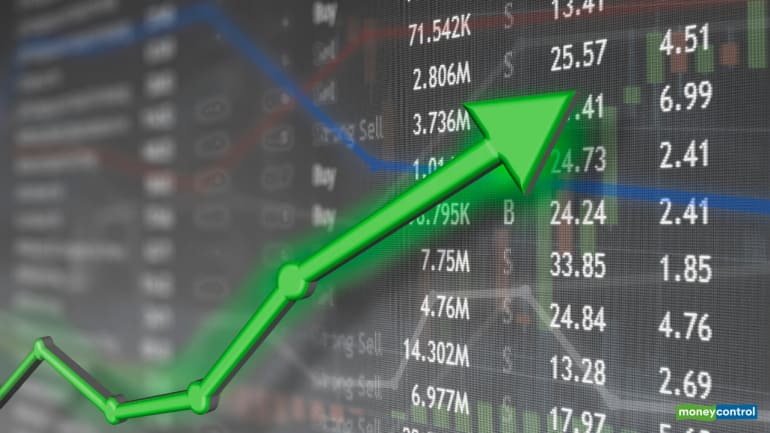Written by: Samridhi Jhingan
Nifty share price, today, and history
The Nifty 50 serves as the flagship stock market index of India’s National Stock Exchange (NSE). Owned and operated by NSE Indices, a subsidiary of the National Stock Exchange, Nifty 50 marks the performance of the 50 large-cap Indian companies listed across 13 sectors of the Indian economy. These companies are carefully chosen based on their liquidity and free-float market capitalization.
This article traces the evolution of the Nifty 50’s share price over the course of history and reflects upon its performance in the current scenario.
History of Nifty
Launched in 1996, with a base year of 1995 and a base value of 1000 points, over the years, Nifty 50 has witnessed the growth of the Indian economy—from the early liberalization phases, the dot-com bust, and the global financial crisis in 2008 to the post-2014 rally and the pandemic-led economic crash and recovery in 2020. Making its way through all the rough paths, Nifty 50 has shown a steady climb past 26,000 by mid-2025, marking its long-term persistence. The seasonal and cyclical trends of the Nifty 50 indicate that while July has, since its inception, been one of the most rewarding months, months like January and June have shown mixed results.
Here is a table showing the performance of the Nifty 50 over the past years.
|
Year |
Annual Returns |
|
2001 |
-16.18% |
|
2002 |
3.25% |
|
2003 |
71.90% |
|
2004 |
10.68% |
|
2005 |
36.34% |
|
2006 |
39.83% |
|
2007 |
54.77% |
|
2008 |
-51.79% |
|
2009 |
75.76% |
|
2010 |
17.95% |
|
2011 |
-24.62% |
|
2012 |
27.70% |
|
2013 |
6.76% |
|
2014 |
31.39% |
|
2015 |
-4.06% |
|
2016 |
3.01% |
|
2017 |
28.65% |
|
2018 |
3.15% |
|
2019 |
12.02% |
|
2020 |
14.90% |
|
2021 |
24.12% |
|
2022 |
4.32% |
|
2023 |
19.42% |
|
2024 |
8.75% |
An analysis of these trends suggests that over these years, the Nifty 50 has maintained a pattern of long-term growth despite periods of volatility. The index reflected positive annual returns in 18 years and negative returns in only 6 years, suggesting a 75% success rate. The Nifty 50 trends generated over 42% annual returns between 2003 and 2007. The post-covid period also captured gains nearing 40% despite global crises. The index captured its greatest decline in 2008 with a 51.79%; however, the decline was strongly recovered in 2009, with a 75.76% gain.
Current Status of Nifty 50
|
Year |
January |
February |
March |
April |
May |
June |
|
2025 |
0.58% |
-5.89% |
6.30% |
3.46% |
1.71% |
3.10% |
This year, the Nifty 50 began with volatility in the months of January and February but instantly recovered it with positive gains in the subsequent months. Today, the Nifty 50 is trading near 25,546.75, reflecting a gain of 0.11%. It appears that the index is currently in an integration phase, where factors such as global economic crises and investor caution are shaping its trends. Although market movement seems to be toned down, the Nifty is showing resilience in the face of adversities by being strengthened by stocks such as Apollo Hospitals. The market is still searching for new corporate earnings and looking out for upcoming government policies to take its next step.
Factors affecting Nifty Share Price
-
Corporate Earnings: Corporate earnings show the quarterly financial performance of the companies listed on the Nifty index. High corporate earnings tend to lift the index as they boost the confidence of investors. However, weak earnings results can lead to a decline in the Nifty index.
-
Macroeconomic Indicators: Nifty share price is affected by various factors, such as interest rates, GDP growth and inflation rates. Investors get attracted to positive trends in these indicators, leading to the Nifty gains; however, negative trends push the index down.
-
Global Market Trends: Improvement in global indices like Nikkei, FTSE, Nasdaq and Dow Jones boost the Nifty to higher trends, while global financial crises lead to a downfall in trends.
-
FII Activity: The Foreign Institutional Investor Activity refers to buying and selling by foreign investors in Indian equities. A sharp inflow in FII leads to Nifty gains; however, a drop in FII activity leads to sharp corrections.
-
Government Policies: Favorable government policies facilitate growth, raising the Nifty index, while uncertain policies lead to sharp drops.
Also read : Top 10 Supermarkets in Dubai 2025
Conclusion
The Nifty 50 is a well-recognized benchmark index that mirrors India’s economic progress by tracking the financial performance of the 50 largest companies listed on the National Stock Exchange. Affected by factors such as corporate earnings, government policies, FII activity, global market trends, and macroeconomic indicators, Nifty 50 has experienced volatility in some phases in history but has always recovered it with positive interest rates.







